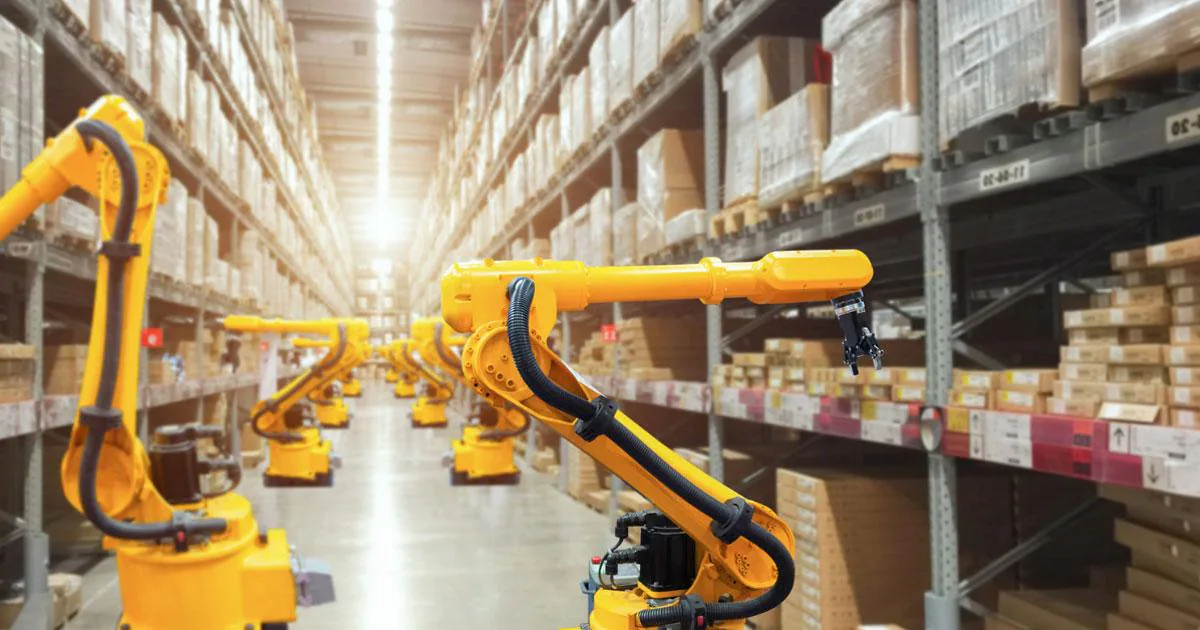With the recent supply chain challenges emerging from the COVID-19 pandemic, more and more companies are looking to robotics for support. MHI confirmed in a survey this year that acquiring and retaining employees continues to be one of the top challenges as well as other supply chain disruptions and increased customer demands. Whether companies are looking to reduce head count, increase throughput or accuracy, or improve safety, robotics automation is a great way to reach their goals and build resilience in their supply chain. In the past few years, we have seen a huge increase in vendors offering various technologies to meet demands.
ProMat 2023 was a great experience to see how much the robotics industry has evolved. We wanted to share our takeaways from ProMat using our vendor-agnostic approach to help you understand the vast capabilities and the continuous improvement of robotics automation.
We’ve seen so much growth in the past few years with advancements in AGV forklift technologies to AMRs that can move, sort, and pick with all kinds of attachments. These robots utilize impressive technologies that can plan and execute point-to-point travel while detecting obstacles to increase safety in the warehouse. Not only are these solutions capable of moving around the warehouse, but they have endless abilities such as storing, retrieving, scanning, sorting, and picking.
A trend we’ve seen this year is a focus on fleet management software and cloud-based technologies. There are many vendors using software to create “missions” for their robots to perform various tasks. Some vendors are even working on products that allow users to initiate new tasks from a handheld device. These types of technology allow for flexibility and limitless capabilities to improve your operations.
Many technologies we have seen are heavily focused on the valuable task of order picking to improve accuracy and efficiency and to reduce travel. We’ve seen many picking solutions including voice picking, pick-to-light, robotic arms, goods-to-person systems, and so much more. Picking technologies are very versatile, as solutions can be catered to diverse industries and operations with different picking methods and can be designed to pick pieces, cases, or pallets.
One of the largest types of picking solutions is the ASRS, which is a high-density storage and retrieval system that improves efficiency and reduces errors. Recently, we noticed there has been an emphasis on more scalable ASRS-like solutions. Many vendors are creating solutions where customers can add and modify their racking configurations to increase their storage capabilities as needed for volume growth. Robots can be added or removed to give better throughput, which can show great volume for those who are affected by peak season volume. This allows for greater flexibility and is a less disruptive way to introduce the ASRS to the operation.
Outside of picking solutions, we have seen an increase in load/unload and intralogistics solutions to allow humans to focus on more value-added tasks. These solutions include unloading and loading trailers, staging and putaway of pallets, transportation of cartons, and so much more.
The emergence of these solutions encourages the transition to a hybrid workforce, where robots and people work collaboratively to get the job done. The development of collaborative robots, known as cobots, bring new potential for business and employees, as they can perform less appealing, difficult, or dangerous tasks alongside humans.
Every vendor has their own specialties whether they are AGVs, AMRs, UAVs, robotic arms, shuttle systems, and more. There is so much opportunity for warehouses to implement different technologies from different vendors, using fleet management software and integration with their WMS. The variety of technologies available provide flexibility and opportunity for improvement. We are even seeing growth in new industries like cold storage environments. Gartner predicts that in the next couple of years, over 20% of our goods will be distributed entirely by automation.
If you want to discuss some of our findings from ProMat 2023 in more detail or have questions about what robotic and automation solutions are right for you, our team of industry experts are ready to help. If you need help selecting the right solution, integrating with your pre-existing WMS, or just want to discuss some challenges and learn more about robotics, email us today at info@bricz.com.
Contributor: Gabi Falcone, Supply Chain Consultant at Bricz
